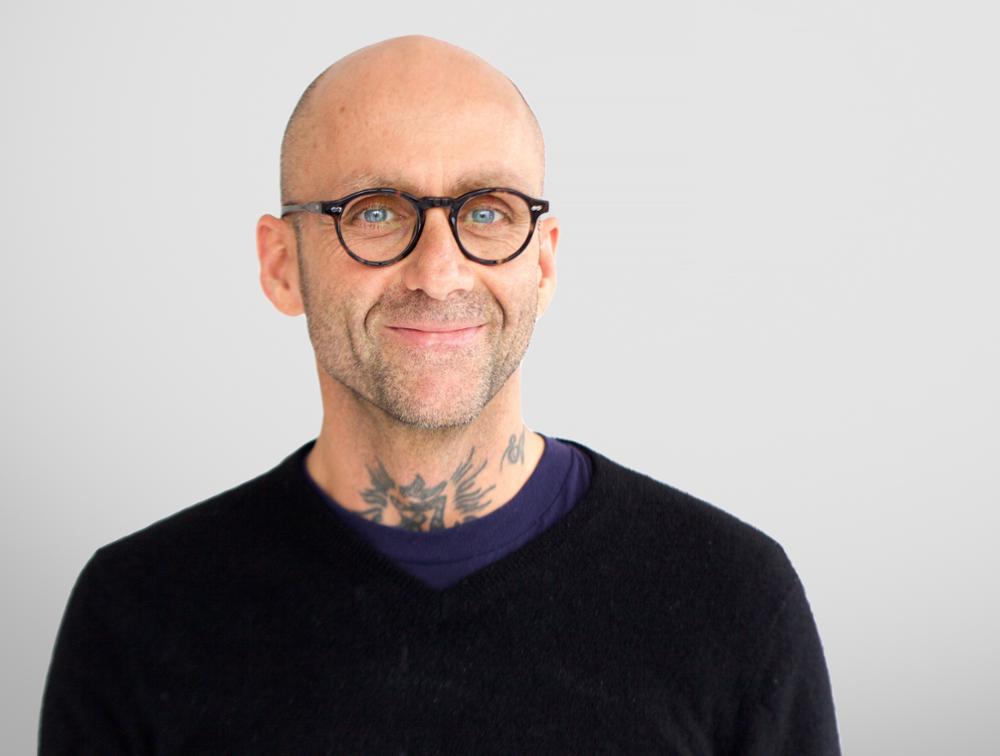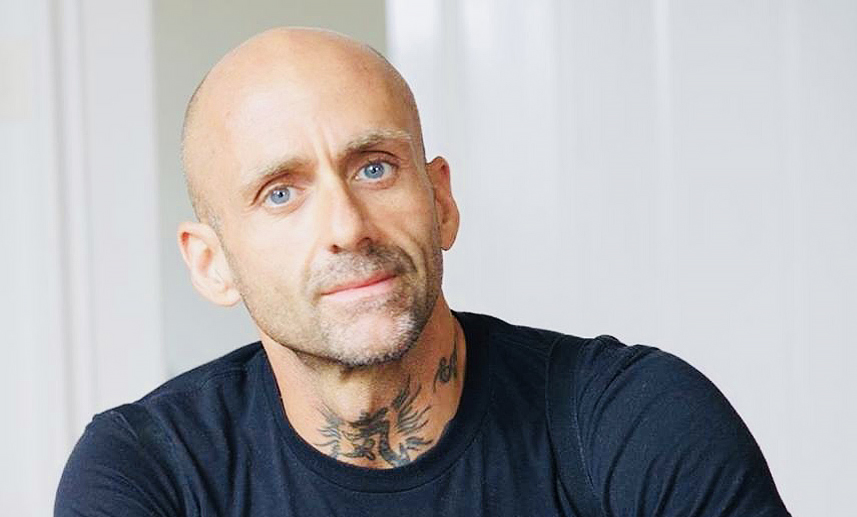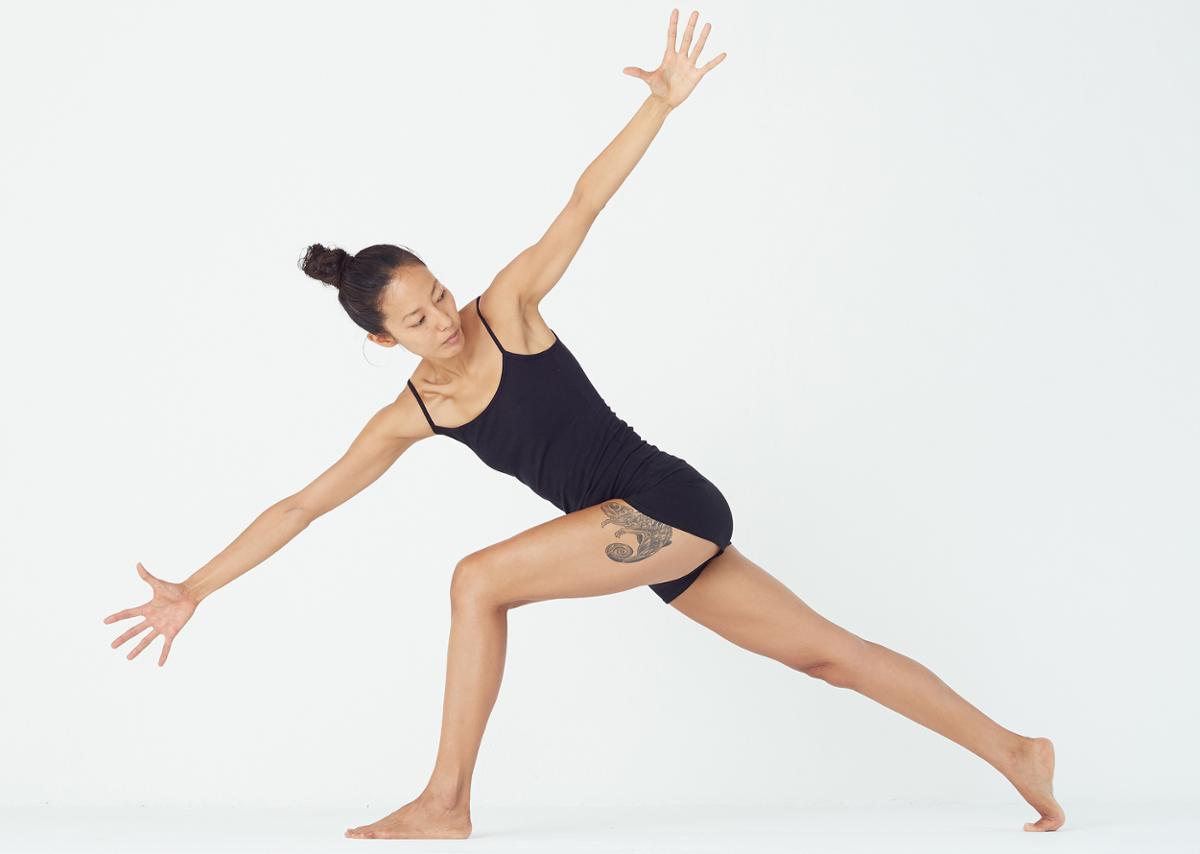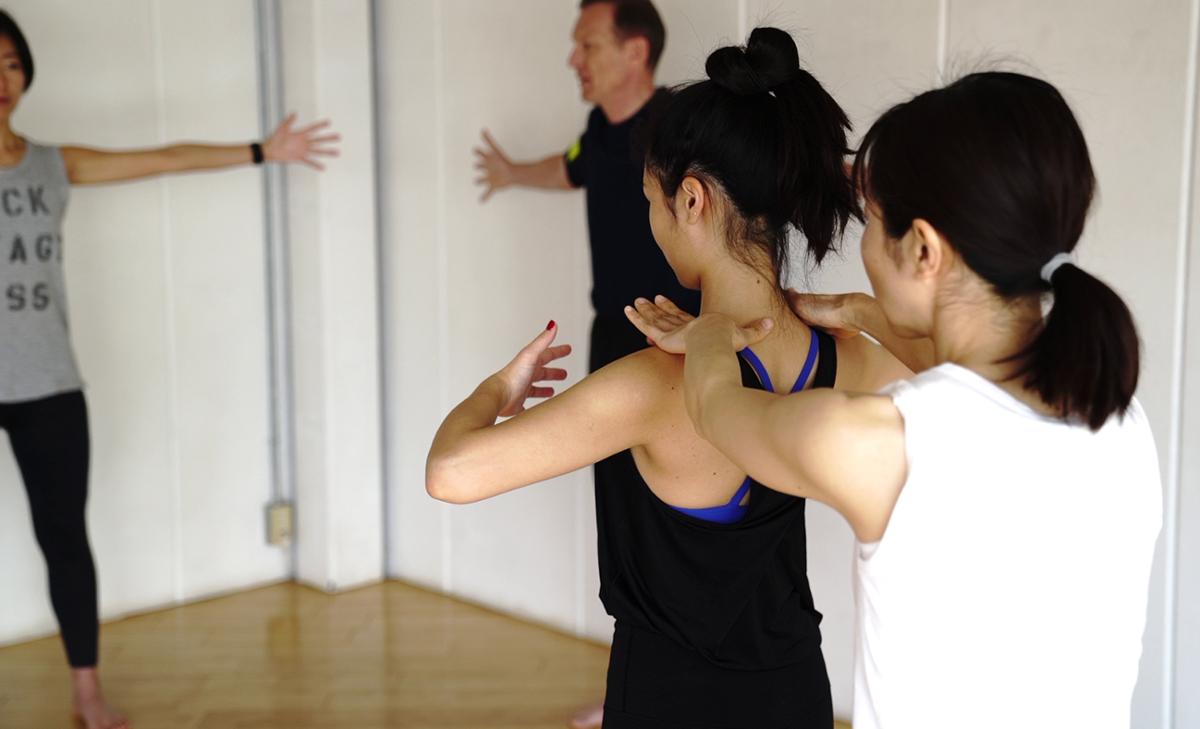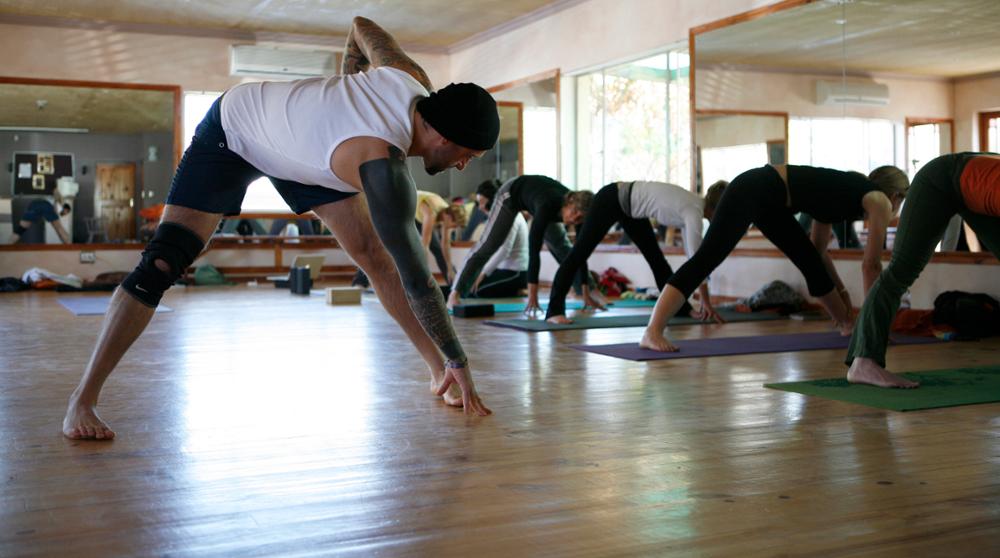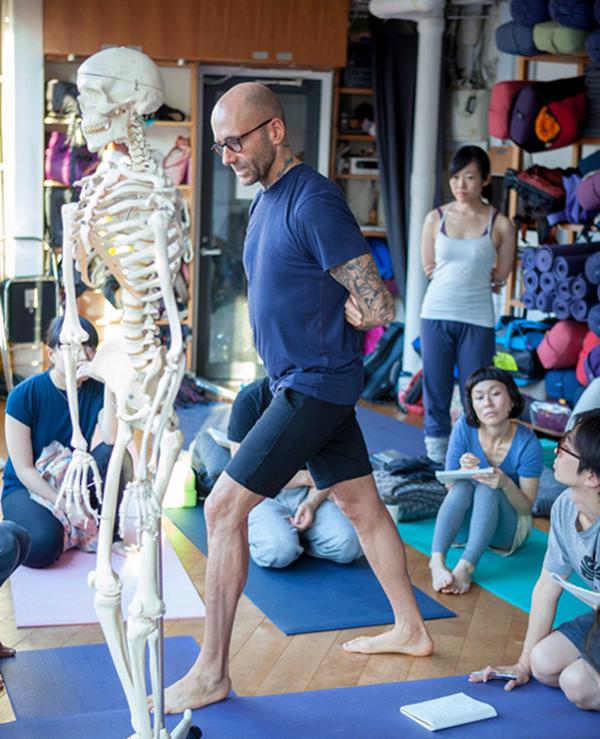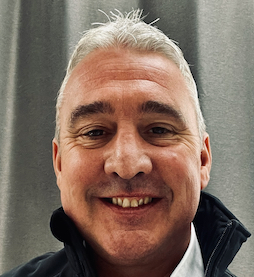Tell us about the Baseworks Method
Baseworks training is a contemplative practice which allocates attention and engages the muscles in a specific way to unlearn movement habits.
By changing the individual’s relationship with their body, it helps them move in a more efficient and safe way; improving their performance in other physical practices and leading to gains in strength, flexibility, mobility, relaxation, improved motor skills, injury prevention and rehabilitation.
It builds an awareness of aspects of the workings of the neuro-muscular system which are commonly exercised without conscious awareness. Reliance on stimulants, adrenaline and endorphins, fitness trackers and machines to engage muscles can all dampen natural sensitivity and numb awareness of our bodies. The Baseworks Method rebuilds this.
Movements are performed barefoot, on a stable surface, making them accessible to those at all levels of fitness. No exercise mat is used to avoid dampening feedback signals from the feet and generally no props are necessary. Long-form sessions are 50-100 minutes and focused sessions working on specific objectives take 15-40 minutes.
How was the method developed?
The Baseworks Method has been shaped through my experience both as a student and a teacher of movement, my practical observations of my students and clients and my experience with various types of injuries. It was also influenced by my observations in the sports/fitness/wellness industry, with its sometimes unsustainable models and my reflections on the role of personal condition and mental factors in the approach to training.
I observed a considerable number of people struggling to progress in their modalities: either dropping off, hitting a wall or getting injured while doing fitness-specific and goal-oriented training, such as martial arts, yoga, and dance. I wanted to develop an approach in which people could recognise their limitations in order to intelligently overcome them or create strategies to work with them.
Over the years of my own training across different disciplines, I experienced my own injuries where I sometimes turned to occupational therapy to address limitations. As a result, I developed a strong interest in this field and brought that into the Baseworks Practice. Certain elements and movement patterns in Baseworks have outcomes comparable to that of physiotherapy.
My personal experience in training, entrepreneurship, creative work, and contemplative practices also led to the evolution of Baseworks as a cross-disciplinary platform for idea exchange, research and collaboration to expand the ideas across disciplines. For example, I’ve worked with musicians, mathematicians, and architects, giving them tools to experiment with their body, which they reported enhanced their professional work.
Since 2009 the method has been tested by thousands of students in Tokyo, where it served as the syllabus of my studio.
Where is The Baseworks Method available?
We have more than a hundred instructors in 18 countries trained in various modalities of the Baseworks Method. They apply our method to their respective teaching modalities, such as personal training, yoga, physiotherapy and dance education. Baseworks also conducts specialised events, courses and workshops globally.
The method is also available online 24/7 and at scheduled virtual events via subscription on our practice platform. This online platform can be used on its own, but is especially useful for hybrid learning in combination with in-person teaching.
Who are your customers?
People from all backgrounds come to us to improve their physical condition, skills and physical and mental health. Our training method provides comprehensive and personalised programmes to help clients identify realistic and sustainable goals which often lie outside the common narrative of the industry.
They typically report improvements in strength, flexibility, joint mobility, posture and balance, as well as the ability to control movements and achieve greater body awareness, spatial awareness, breathing capacity and understanding of the body.
The method also assists with performance in other physical activities and sports, while leading to less soreness and improved recovery after other physical activities. People report finding it easier to learn new movements, relief of some chronic pain and improved sleep quality.
Many of our clients report that practice has also led to improvements in mental health, such as stress reduction, improved psychological resilience, better mood and mood regulation and heightened social awareness. In addition, they report improved emotional regulation and self-esteem, more personal and interpersonal acceptance, appreciation and understanding of differing opinions.
They also observe improvements in their ability to notice and appreciate incremental steps in their progress – first in physical practice, and then in other domains of activities and experiences.
What are your aims?
Since we have cross-disciplinary R&D and collaboration interests, we want to branch out in different directions. As a training modality, we’re planning to continue further development of our digital, in-person, and hybrid learning offerings, expanding the application of the method into more specialised areas through collaborations.
We’re also planning to conduct more training for health/wellness/fitness industry professionals and businesses and educational institutions and as we scale up, we’re considering the development of a franchise model.
We want to establish a niche for The Baseworks Method which is adjacent to, but distinct from, the sports, health, fitness and wellness industries.
Going forward, we’ll continue to invest in scientific research and collaborations around Baseworks-specific applications in relation to neuro-muscular physiology, motor learning, mechanisms of perception and cognition. We’ll also continue to work closely with the tech sector to embrace the remixing of ideas centred around the future of education and collaboration across different industries.
Our products include both a sensory-motor education method and conceptual frameworks/educational content meant to re-conceptualise the role of physical movement in the human experience. This has important implications in academic and physical education, wellbeing, mental and physical health management, social design, creativity and community-building.
Because we hold a unique position at the crossroads of different lifestyle and education sectors, an important part of our marketing strategy is to educate people about the relationship between personal improvement and a dedication to compounded learning.
We’re not offering any kind of quick-fix solutions, but promoting the idea that – as with any learning – reaching a certain threshold in skill and understanding can lead to faster learning curves as a by-product of that effort.
More: www.baseworks.com








